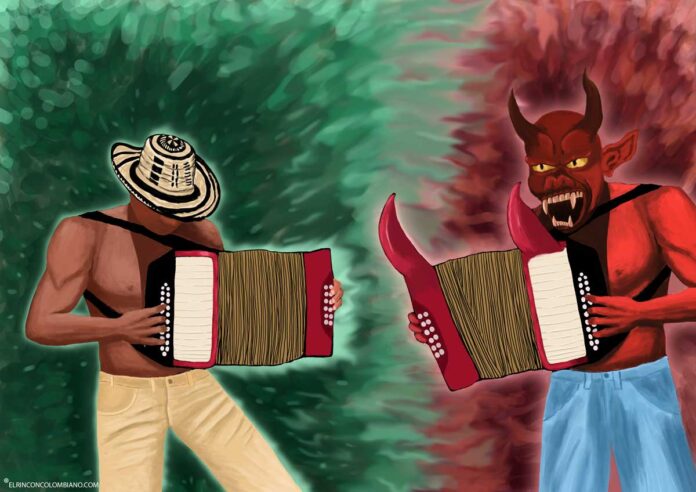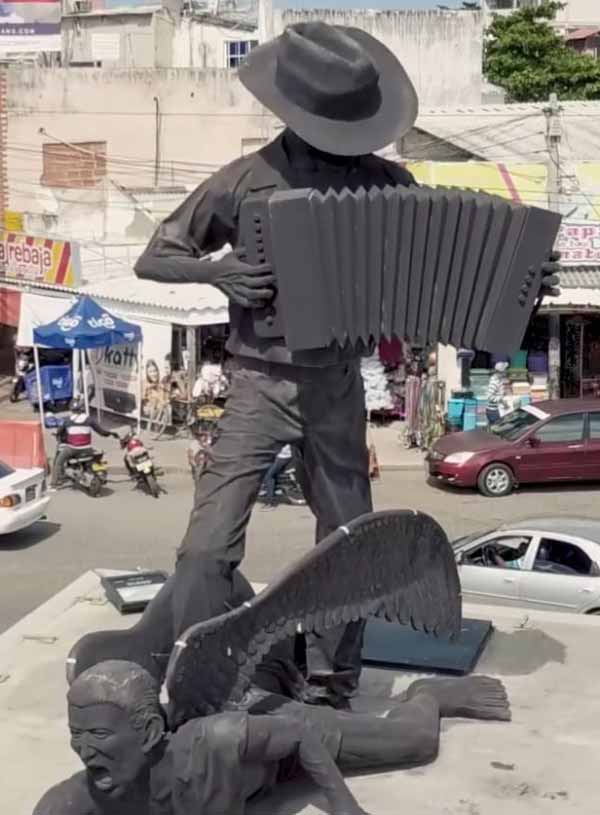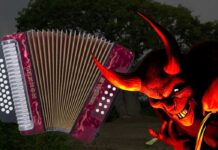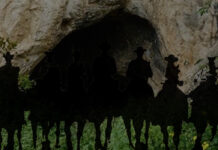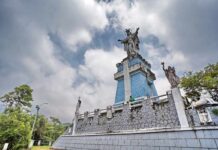The legend of Francisco the man narrates the musical confrontation that a vallenato minstrel had against the devil himself. Francisco the man has become a mythical figure within the vallenato culture especially in the Colombian Caribbean and has become the prototype of the “vallenato minstrel” in Colombia.
Legend of Francisco the man
Legend has it that, on a starry night with a clear moon Francis the man He was traveling on his donkey as usual along a desolate road after returning from a party. To make the trip lighter and more bearable, he began to play his accordion and sing songs; Suddenly he began to hear how his tunes were answered with accordion touches and melodies much better than his own. Surprised by that event, Francisco continued playing and singing so as not to let himself be defeated in that contest that had started without his intention.
(Read Also: Legend of the Alligator Man)
After a while of playing and without being able to see in the darkness who was the one who was challenging him with those melodies, Francisco tried to look for that other musician to be able to face him head on. It was there that he was able to distinguish the figure. who was hiding in the darkness of the night, with the help of the moonlight he was finally able to clearly see his opponent and it was Satan himself.
There Francisco, afraid but without cowering, began an arduous battle in which every tune and melody he played was surpassed by the devil, who threatened to take his soul if he did not manage to defeat him. At a certain point, seeing that he was losing that battle, Francisco used everything his ingenuity and began to sing the creed backwards in order to seek divine help with which to defeat that opponent. That strategy was very effective because after beginning to play it he was able to interpret a tune that surpassed the devil in every aspect and Seeing himself defeated, he had no choice but to flee the place completely defeated.
Origin of the legend of Francisco the man and the historical Francisco
The legend of Francisco the man is attributed to the life of the vallenato minstrel “Francisco Antonio Moscote Guerra” born around 1849 or 1850 in "Prince" a town near Riohacha in the region formerly known as “Madalena Grande” which today includes the departments of Cesar, Magdalena and La Guajira, Moscote is one of the most important figures in the vallenato folklore and recognized as one of the most important minstrels of his time. Francisco was nicknamed "The Man" since he was a child, since he began to play the accordion empirically from an early age and out of habit, those who were good at something specific at that time used to say "That's the Man", this nickname would have given him been placed by his father.
(Read Also: Legend of the Whistle)
It is said that the meeting between Francisco Moscote and the devil occurred when he was traveling back from buying an accordion to play at the party of a girlfriend of his named Edilda Palacio on the road that previously led to the Upar Valley, there he would meet a man who had previously challenged him to a accordion duel in Riohacha, in the middle of the road they began to compete chord by chord for many hours until Francisco was finally able to defeat him, after which he was so exhausted that he fell asleep in the middle of the road, and his son had to go to his rescue. After that they had a big party at his girlfriend's house, it is said that after that meeting he premiered the famous verse of Love, love.
Most stories and investigations place Francisco Moscote as the protagonist of the story that became a legend. But Moscote is not the only candidate proposed as the protagonist of the feat of defeating the devil in this musical battle.
(Read Also: Legend of the Cienaguero Caiman)
Francisco “Pacho” Rada, born in Magdalena dish and another of the great minstrels of Vallenato history who is attributed with the creation of 1 of the 4 traditional airs of Vallenato “The Son” is another of the candidates proposed as the protagonist of this legend. During his childhood Rada was also nicknamed by his uncle “Francisco the man” thanks to his great talent with the accordion.
Other Versions of the legend of Francisco the man
Most of the stories around the legend of Francisco the man are very similar, this is one of the legends that has very few versions around the structure of the events, even though there are different stories that propose different protagonists.
Among the different versions, what changes the most are small details. Some report that when the devil met Francisco, he made the stars and the moon disappear and that when Francisco started playing, he returned them to their place. Some report that the devil He fled amidst smoke and fire, in others it is said that he just disappeared.
Tributes and recognition to the figure of Francisco the Man
The figure of Francisco the man has gained great cultural importance in Colombia, especially the Caribbean region, in which different tributes and recognitions have been made to this figure.
(Read Also: Legend of the Cucacuy)
Since 2009, the “Vallenato Festival of Francisco the Man” which is one of the most important in Colombia in its category, the platform of the Alfonso López de Valledupar square It was also named in honor of this figure; On this stage until 2004 the “Festival of the Vallenata legend” the most important festival of its category and which also pays tribute to this legend through its different events.
In the book One hundred years of solitude of the Nobel Prize in literature Gabriel Garcia Marquez Mention is made of Francisco the man, there he is described as an elderly globetrotter of more than 200 years who passed through Macondo carrying news.
“Francisco El Hombre was an elderly globetrotter of almost 200 years who frequently passed through Macondo spreading the songs he composed himself. In them, Francisco El Hombre related in minute detail the news that occurred in the towns on his itinerary, from Manaure to the confines of the Ciénaga, so that, if someone had a message to send or an event to divulge, he paid him two cents. to include it in his repertoire. That was how Úrsula found out about her mother's death, by pure chance, one night when she was listening to the songs in the hope that they would say something about her son José Arcadio.” One hundred years of Solitude. Gabriel Garcia Marquez.
In a roundabout in Riohacha the Monument in honor of Francisco the man, alluding to the figure of Francisco Moscote.
(Read Also: Legend of the Scared Cabellona or the Mechuda)
In Bucaramanga there is the “Francisco el Hombre park” in which there is also a sculpture in honor of this character.
In 2000 the film came out “The Devil's Accordion” which takes as reference the life of Francisco “Pacho” Rada as inspiration for the character of Francisco the man. In the film “The Travels of the Wind” 2009 also refers to this legendary figure.
In addition to the aforementioned recognitions, there are streets and avenues that pay tribute to this character throughout the Colombian Caribbean, revealing his importance on a cultural level.
Did you like this article? Leave your opinion in the comments and share this story with your friends and acquaintances so they can discover our unique stories.


